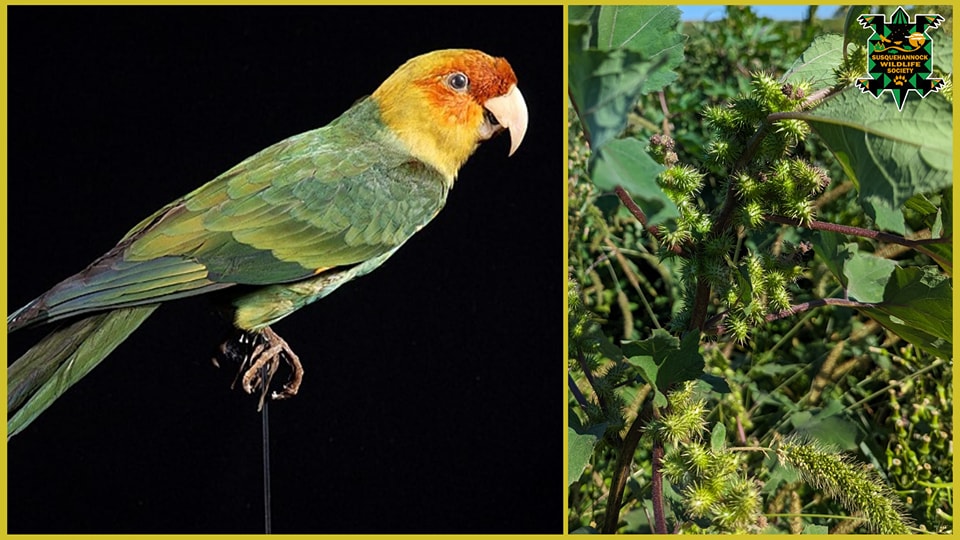One thing that always fascinates us are the echoes of native species that have gone extinct. Telling stories about long gone species like the Mammoths and Mastodons that are theorized to have caused the adaptation of large fruits and seed pods of the Osage Orange and Kentucky Coffeetree, as well as the spiked defense of the Honey Locust tree, all developed for much larger herbivores than we have today, can help connect us to more ancient version of our landscape.
One more recent relationship is that of the extinct Carolina Parakeet and the Cocklebur plant. This plant is considered invasive here in Maryland and it seems one species was introduced from Europe and another likely from Central America. The last captive bird died in the Cincinnati Zoo in 1918 and was declared extinct in the wild in 1939. This species has often served as a sad reminder along with the Passenger Pigeon of something that slipped away just before we gained the ability to reverse course as we did with many species just a few decades later. The plant relationship between our only parrot species native to the Mid-Atlantic (if you don’t count falcons that have a common ancestor) is that the Carolina Parakeet was adapted to feed on these highly toxic Cocklebur seeds, providing a valuable service to farmers who had to deal with them aggressively growing within their crops and livestock pastures where domestic species could get sick from eating them. It was documented that the toxins from the seeds in effect made the Parakeet itself toxic, or at least distasteful, to a variety of potential predators including humans, who at the time were destroying almost incomprehensible numbers of Passenger Pigeons for food markets all across the United States, particularly large cities.
With two beautifully colored subspecies, the Carolina Parakeet became a victim of its own appearance and behavior. Despite their service to agriculture by eating the Cockleburs, they also would feed on orchard fruit seeds in large flocks, causing them to be shot as pests. Their social nature also made them efficient to wipe out because birds would congregate around their dead, allowing for an easy target. Additionally, their colorful feathers were sought after by the fashion industry to be used on women’s hats. This compounded with competition for limited nest cavities with European Honeybees and even moreso, the destruction of the great forests all across the east that they called home, they declined rapidly through the 1800s. While evidence is lacking, it is also possible that a poultry disease was an additional factor as well.
Our goal is to ensure that these species and their story are never forgotten so we can learn from them and prevent their fate from ever happening again.

Photo of mounted specimen in the Naturalis Biodiversity Center, via Wikipedia

